Hello, this is Conservario.
One thing I’ve been strongly noticing during my lessons recently is that quite a few people surprisingly lack basic knowledge.
Even those who can play to some extent while reading tablature often struggle when I ask them to play Do-Re-Mi-Fa-So-La-Ti-Do anywhere on their instrument.
Why is it important to be able to play Do-Re-Mi-Fa-So-La-Ti-Do? What are the benefits of being able to do so?
Let me explain.
After all, Do-Re-Mi-Fa-So-La-Ti-Do is important.
First of all, Do-Re-Mi-Fa-So-La-Ti-Do is also known as the "major scale."
The term "major scale" appears frequently in the world of music, so it's good to get familiar with it.
If you've ever taken a music class in school, you’ve probably heard the sound or melody of Do-Re-Mi-Fa-So-La-Ti-Do before.
Even if you didn’t enjoy music class, that’s perfectly fine.
Anyone who listens to music on CDs or YouTube has already heard the major scale countless times.
You might be wondering, "What do you mean?"
Simply put, almost all music—except for old classical pieces—has been created using the major scale.
(Note: This column is written for beginner guitarists, prioritizing simplicity. There are exceptions, such as contemporary music and progressive rock, so keep that in mind.)
Guitar, bass, vocal melodies, and chords—all of them are built using the major scale.
For example, there’s a well-known chord called C.
That chord is simply the notes Do (C), Mi (E), and So (G) played at the same time.
When played together, what were just individual notes—Do, Mi, and So—instantly transform into a C chord.
Even the chords and chord progressions that sound cool to you are ultimately just different combinations of notes from the major scale.
Are you starting to see the importance of the major scale?
Not knowing or being unable to play the major scale is truly a missed opportunity.
I assume that almost everyone reading this column is a native Japanese speaker.
You can most likely recite the 50 Japanese syllables from "あ" to "ん."
That’s why you’re able to speak and use Japanese.
It would be impossible to speak Japanese without knowing how to pronounce these syllables at all. If you were only imitating the sounds you heard, guessing at their pronunciation, real conversation wouldn’t be possible.
As I mentioned earlier, most music is created using the major scale.
Whether you’re strumming chords, fingerpicking solo guitar, or shredding metal solos, you’re still playing combinations of notes from the major scale.
Not knowing or being unable to play the major scale is like trying to read or write Japanese without knowing the 50 basic syllables.
Being able to play the major scale will significantly improve your guitar skills—so let’s learn it!
Let’s practice the most well-known major scale.
Here’s the tablature:
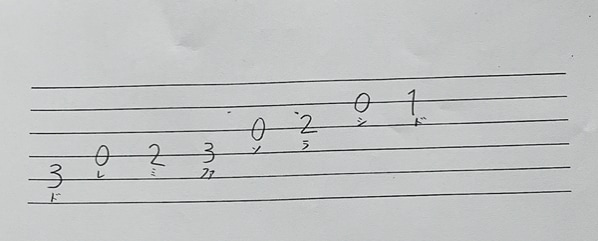
This is the lowest-position major scale using open strings.
The key point to remember is to assign one finger to each fret.
For example, when playing the 3rd fret on the 5th string, always use your ring finger.
Regardless of which string you're playing—whether it’s the 6th or 2nd string—the 3rd fret should always be pressed with your ring finger.
Similarly, follow this finger placement rule:
1st fret → Index finger
2nd fret → Middle finger
3rd fret → Ring finger
4th fret → Pinky finger (though there are no 4th fret notes in this exercise, so don’t use your pinky!)
Stick to these rules as you play!
Why is it important to follow this fingering?
If you press the frets with random fingers, your finger positioning (運指, pronounced "unshi") will change every time you play.
Even though the frets are the same when ascending (Do-Re-Mi…) and descending (Do-Ti-La…), if you use different fingers each time, your playing will become inconsistent and sloppy.
Take it slow—super slow—but always stick to the correct fingering.
For now, don’t worry about right-hand technique or unwanted open-string noise.
What matters most is building the habit of proper fingering from the start.
If you do this now, your progress later on will be on a whole different level!
Summary
In this column, I explained what the major scale is and how to practice it. I included a practice tablature in the second half, but even if you just remember that Do-Re-Mi-Fa-So-La-Ti-Do is called the major scale, that’s totally fine for now!
You don’t need to memorize or perfect everything from the start.
Learning little by little actually helps you retain information better.
I understand the urge to rush when you see others playing effortlessly, but repetition is key when you consider how the human brain and body work.
Playing something once and immediately moving on, then repeating that cycle—this might look like rapid progress, but in reality, it won’t stick (unless you’re a genius).
So, don’t rush—take your time and practice carefully with repetition.
You can improve on the guitar just by practicing songs, but learning the major scale and doing fundamental exercises will make it easier to play any kind of music or song in the future!
The major scale isn’t just useful for practice—it’s also incredibly helpful for composing and transcribing music by ear.
Don’t underestimate it as just “simple Do-Re-Mi-Fa-So-La-Ti-Do.” Play it, internalize it, and truly make it your own.
Once you’ve mastered it, the way you listen to and play music will completely change.
Thank you for reading until the end!
The “sound & person” column is made up of contributions from you.
For details about contributing, click here.











![[Guitar Guide] Tips and Precautions for Playing Power Chords](/contents/uploads/thumbs/5/2022/3/20220325_5_17247_1.jpg)
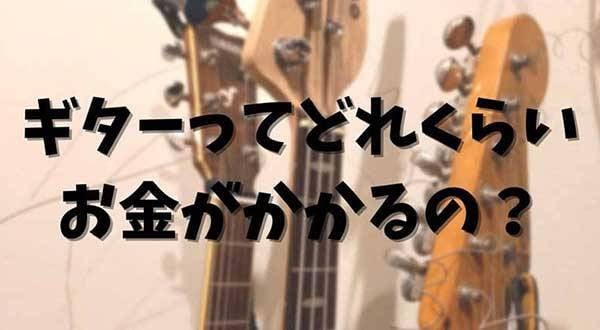
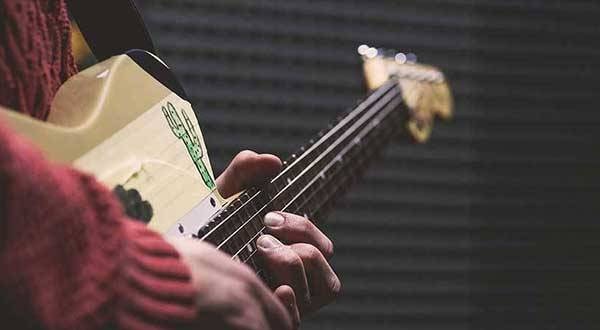
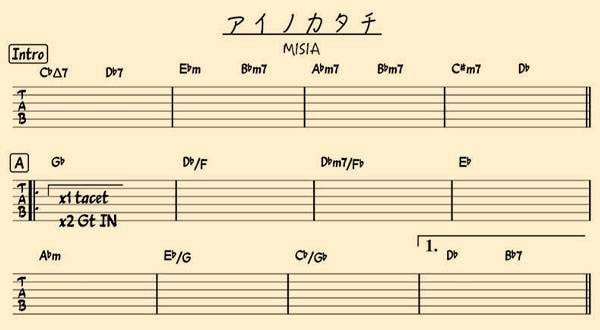
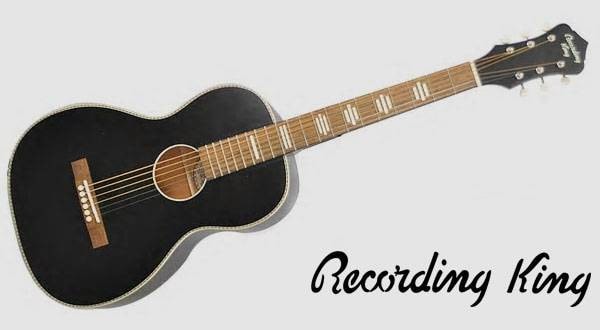
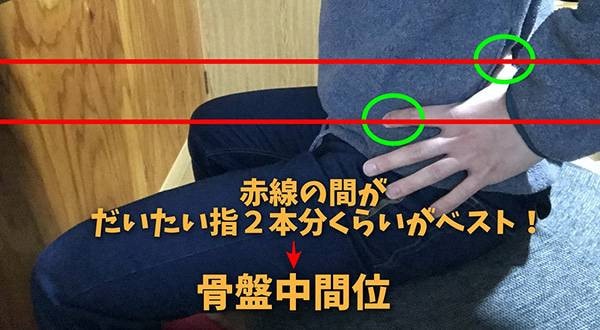
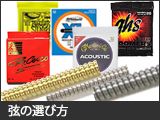 エレキギター弦の選び方
エレキギター弦の選び方
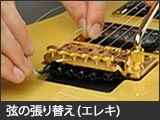 弦の張り替え(エレキギター)
弦の張り替え(エレキギター)
 ギターのお手入れ
ギターのお手入れ
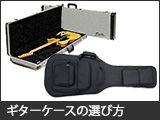 ギターケースの選び方
ギターケースの選び方
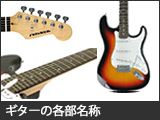 ギターの各部名称
ギターの各部名称
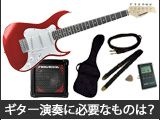 ギター演奏に必要なものは?
ギター演奏に必要なものは?















